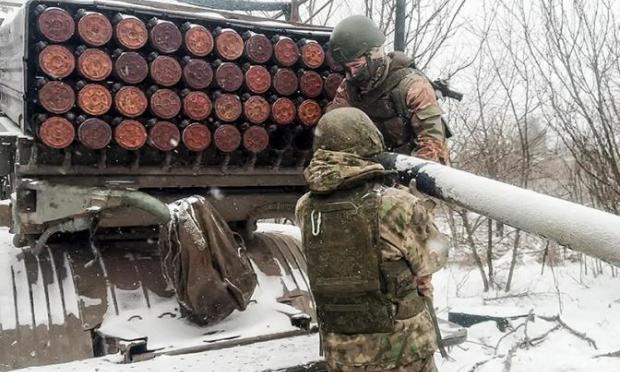The Armed Forces of Ukraine are abandoning their positions in the Avdiika region, according to videos circulating on social networks.
The region has been the focus of Russian attacks for the past few weeks with Moscow deploying large forces and advancing in the region.
Ukrainian fighter: "We are retreating from our position. The Russian orks have knocked us out. Not many of us came back and certainly not all of us. I don't know where to go next," he reportedly states.
Russian soldiers take more prisoners in the direction of Donetsk, and in Marinka.
There they separate the Officers and begin on-site interrogations to gather information on the personalities of the Ukrainian commanders and senior leadership.
Trouble with the Ukrainians' Leopard-2 tanks as well
"Ukraine no longer has operational Leopard-2A4 tanks," a Russian military official says.
He stresses that "the Ukrainians are trying to 'upgrade' the whole situation with American Abrams tanks; NATO's armored capabilities are limited in combat capacity, there is a low level of maintenance, lack of spare parts."
The Russians have massively imported modernized T-72BM3 tanks and have succeeded in mass attacks on specific sites while groups of Russian "hunters" with anti-tank weapons systematically destroy every Ukrainian tank.
Fierce fighting in the fields and widespread use of rocket artillery systems
According to reports , the Russians once again hit the Ukrainian rear positions with Tornado-S MLRS missile systems at a range of more than 70 km.
The Russian military is preparing an attack to create a 15-kilometre 'neutral zone' in the Kharkiv region
According to the American ISW Institute, Russian forces are carrying out a large-scale offensive operation in the Kharkiv region to create a "neutral zone" with the Belgorod region.
This is what authoritative American analysts say.
They insist that "Russian forces may also intensify their efforts to capture Kupiansk in the coming weeks".
Russian guided missiles hit several enemy military buildings and a field command.
Ukrainian intelligence reports that there are currently 620,000 Russian troops fighting in Ukraine, and Russian units are 95% manned.
"Thanks to the high level of staffing, the Russians can carry out rotations and withdraw units for rehabilitation, avoiding mobilization," said V. Skibitsky, deputy head of Russia's main intelligence directorate.
The US commits 300 billion Russian funds to the West
The Biden administration supports legislation to confiscate frozen Russian Federation assets worth some $300 billion.
The US President advocated such an initiative after Congress blocked a new aid package for Ukraine.
"The (Maiden) administration "fundamentally supports" a bill that would allow asset forfeiture," Bloomberg news agency reported, citing a document the US National Security Council sent to the Senate Foreign Relations Committee in November.
Biden decided to approve the measure after Republicans blocked another aid package to Ukraine in Congress.
Senators introduced a bill that allows for the confiscation of sovereign Russian assets and their transfer "in favor of Ukraine" in June 2023.
At the same time, the White House wants to coordinate actions with other G7 countries in order, in particular, to reduce the risk of undermining confidence in the United States on the part of foreign investors.
Weapons that will increase Russia's lead over NATO in 2024
The modernization of the Russian military shows no signs of slowing down, with the Armed Forces receiving weapons that proved themselves on the battlefield in the proxy war in Ukraine, plus strategic weapons intended to prevent the escalation of the current crisis into World War III.
"When we talk about conventional types of weapons, today the focus is on a gradual shift to high-precision weapons," Russian military analyst Alexei Leonkov told Sputnik, pointing to the delivery of new systems such as the Koalitsiya-SV self-propelled guns and Malva self-propelled guns to ground forces and the overhaul of tank platforms.
"Other areas to watch include new electronic warfare and communications equipment, while Kinzhal, Zircon, Kalibr and Onyx missiles are being mass-produced for the Russian Air Force and Navy, and we have upgrades to the nuclear triad with Sarmat and Yars ICBMs, Tu-160 bombers and Borei submarines," Leonkov said.
2024 will be a turning point for defining Ukraine's new borders.
This prediction is given by the American Institute for the Study of War (ISW).
After the failure of Kiev's "counter-offensive", rumours of Moscow and Washington's interest in negotiations intensified.
The debate focused largely on the intransigence of President Zelensky, who must be pressured to accept that Ukraine must give up part of its territory.
It is quite obvious that any independent government would be a pawn of the West and a potential threat to Russia, so no matter how soon the fighting ends.
The Russians will attempt to eliminate perceived threats and bring Ukraine back into line.
The administration and political leadership in Moscow will have to choose between two scenarios for strengthening the western border.
First, large, well-equipped, combat-trained forces will be stationed along the new border. The deployment of new formations will allow to solve a major problem concerning the Russian OPCF.
Continuous maintenance of large formations, Russian experts write, is too expensive.
The second scenario is the deployment of a limited corps along the western border, which in case of a NATO attack will be able to temporarily contain the attacking forces until the reserves move into the conflict zone.
This scenario, according to ISW, is much cheaper, but requires a lot of preparation and Russia would have to do a lot with its reserve at a new level, and this is already being implemented.



